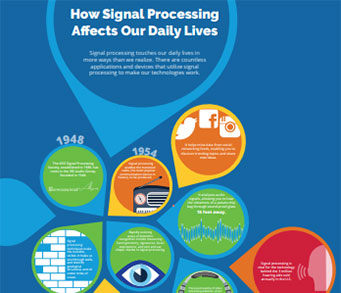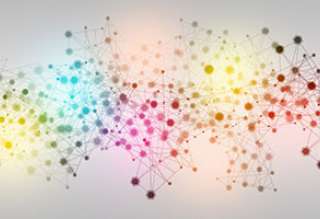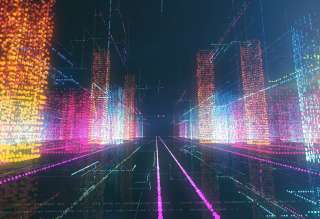SPS Feed
Top Reasons to Join SPS Today!
1. IEEE Signal Processing Magazine
2. Signal Processing Digital Library*
3. Inside Signal Processing Newsletter
4. SPS Resource Center
5. Career advancement & recognition
6. Discounts on conferences and publications
7. Professional networking
8. Communities for students, young professionals, and women
9. Volunteer opportunities
10. Coming soon! PDH/CEU credits
Click here to learn more.
The Latest News, Articles, and Events in Signal Processing
We study distributed filtering for a class of uncertain systems over corrupted communication channels. We propose a distributed robust Kalman filter with stochastic gains, through which upper bounds of the conditional mean square estimation errors are calculated online.
In this paper, a smart pilot sequence assignment method is proposed to minimize inter-cell interference generated in a massive multi-input multi-output (MIMO) system due to pilot contamination in uplink TDD (Time Division Duplex) mode. The proposed method employs a zero-one integer linear programming method as the assignment algorithm.

Aalto University is a community of bold thinkers where science and art meet technology and business. We are committed to identifying and solving grand societal challenges and building an innovative future. Aalto has six schools with nearly 11 000 students and a staff of more than 4000, of which 400 are professors. Our main campus is located in Espoo, Finland. Diversity is part of who we are, and we actively work to ensure our community’s diversity and inclusiveness in the future as well.

The Department of Neurosurgery seeks a talented postdoctoral research associate to study the neurophysiology of sleep in human subjects, within the combined translational research efforts of Aviva Abosch, MD, PhD, Professor and Chair, Department of Neurosurgery, University of Nebraska Medical Center (UNMC), and Stephen Gliske, PhD, Assistant Professor, Department of Neurosurgery, and Co-Director of the MEG Program, UNMC.

Autonomous on-board drone navigation (i.e., without human intervention) in inaccessible environments is a fundamental challenge. The goal in this project is to develop novel machine learning algorithms for autonomous drone navigation in outdoor environments including localization and synchronization for BVLOS (beyond visual line of sight) scenarios and/or GPS-denied environments, by utilizing RF signals from fixed ground stations and/or in collaboration with other drones.

Title: Sparse predictive models for the analysis and classification of pathological speech
Duration: from 01/11/2021 to 31/12/2022 (could be extended to an advanced position)

Digital Voice Systems, Inc. (DVSI) is seeking a qualified Speech Research & Development Engineer at our office in Westford, MA. This is a great opportunity to join our team of world class engineers in designing high quality voice compression technology that is implemented in hundreds of millions of telecommunication systems world-wide.
Lecture Date: May 25, 2021 -- Virtual Lecture
Chapter: Madras
Chapter Chair: S. Salivahanan
Topic: Making sense out of restless brain activity with computational neuroimaging

--------------------------------------------------------------
Researchers in Speech, Text and Multimodal Machine Translation at DFKI Saarbrücken, Germany
--------------------------------------------------------------
The MT group at ML at DFKI Saarbrücken is looking for
senior researchers/researchers/junior researchers
in speech, text and multimodal machine translation using deep learning.
June 4-5, 2021
Application submission deadline: May 10, 2021
Location: Virtual conference
Workshop Flyer
Pages
SPS Social Media
- IEEE SPS Facebook Page https://www.facebook.com/ieeeSPS
- IEEE SPS X Page https://x.com/IEEEsps
- IEEE SPS Instagram Page https://www.instagram.com/ieeesps/?hl=en
- IEEE SPS LinkedIn Page https://www.linkedin.com/company/ieeesps/
- IEEE SPS YouTube Channel https://www.youtube.com/ieeeSPS


















